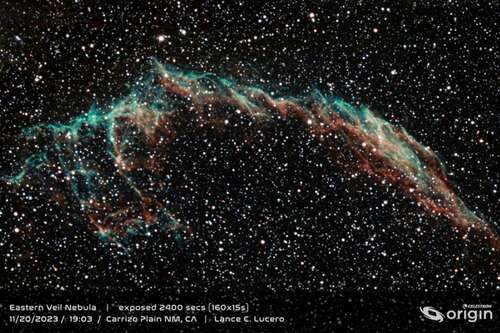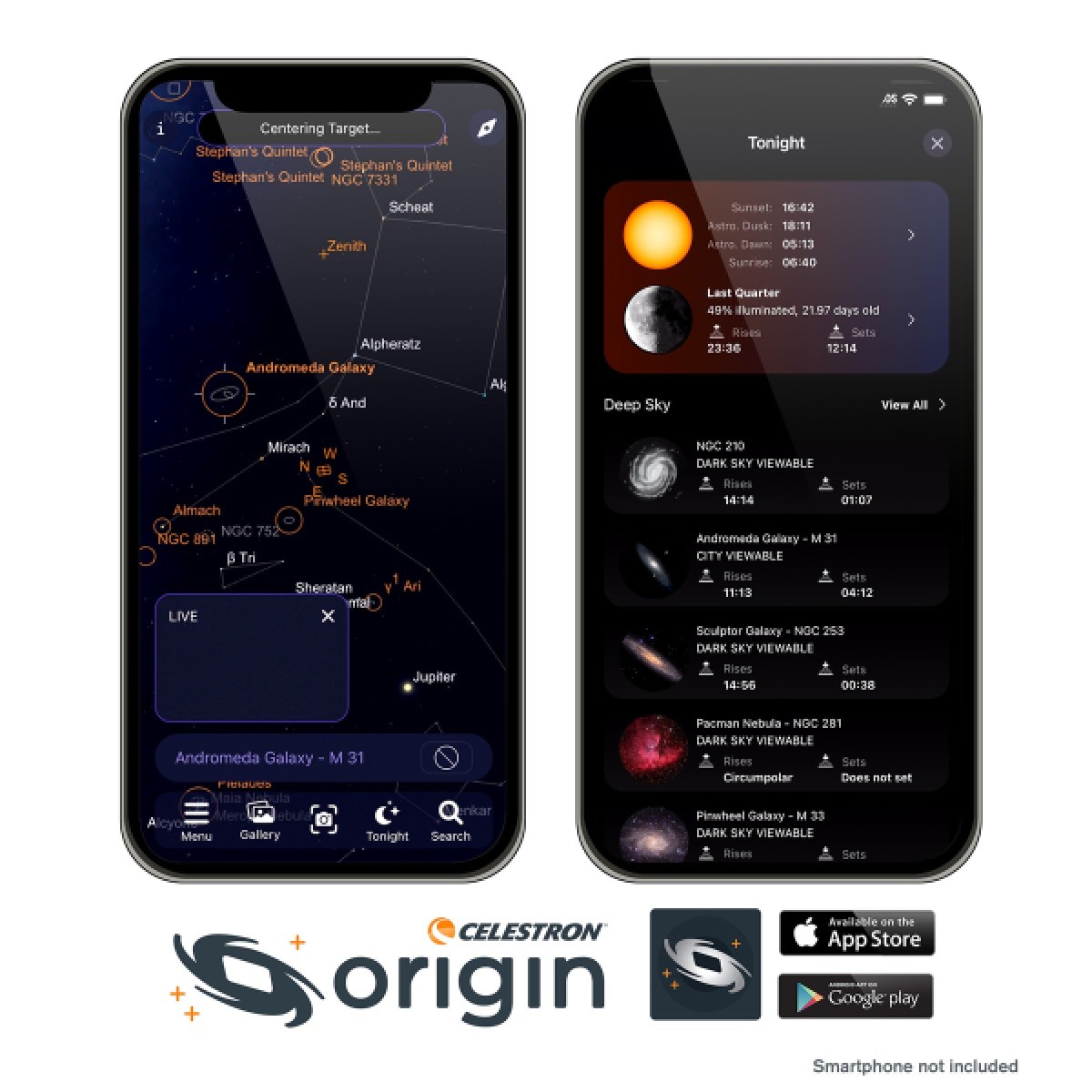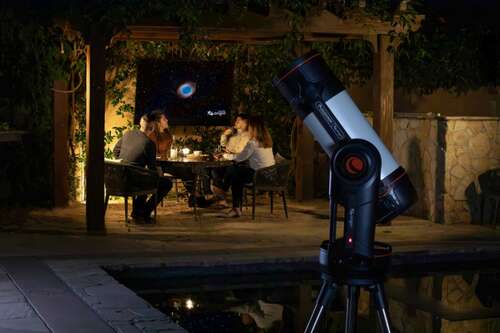Celestron has introduced Celstron Origin, an intelligent home observatory for astronomy enthusiasts.
Torrance, California-based Celstron makes AI-based high-quality telescopes and other optical goods. The Celestron Origin will combine astronomical technologies with user convenience. Celestron made the announcement at CES 2024, the big tech trade show in Las Vegas.
This product brings state-of-the-art RASA optics to both novice and seasoned astronomers, enabling effortless exploration of the universe from the comfort of one’s living room, backyard, or campsite. That could make Celestron competitive with Unistellar, which uses AI to filter out light noise in cities so you can look at other galaxies via a telescope in your backyard.
Celestron said the Celestron Origin incorporates decades of its innovation and expertise, integrating the most sophisticated optical and astronomical technology available today.
VB Event
The AI Impact Tour
Getting to an AI Governance Blueprint – Request an invite for the Jan 10 event.

At its core is a customized version of the Rowe-Ackermann Schmidt Astrograph (RASA) f/2.2 optical system. This system, renowned for its extraordinary wide field of view and ultra-fast telescope technology, has been the preferred choice of professional researchers and government institutions worldwide.
The company said what sets Celestron Origin apart is its onboard camera sensor and AI-powered image processing capabilities, which bring celestial objects from deep space to users’ smartphones, tablets, or smart TV/projectors in stunning color and detail within seconds.
Utilizing the 6.4 MP Sony IMX178 color CMOS sensor with STARVIS back-illuminated ultra-high sensitivity-low noise technology, Celestron Origin provides greater clarity and image detail compared to larger traditional telescopes. This makes it an indispensable tool for both novice and seasoned astrophotographers alike.

Corey Lee, CEO of Celestron, said in a statement, “Viewing the night sky has traditionally been complicated for amateur astronomers, often requiring extensive product knowledge and time-consuming setup and navigation. Likewise, the communal experience of visiting an observatory leaves little flexibility in choosing what to see and when to see it. Celestron Origin removes all these barriers, offering beginners, experts, and anyone in between an easy-to-use and state-of-the-art home observatory experience.”
In addition to its optical performance, Celestron Origin incorporates integrated software, a mobile app, and automated electronics that provide unprecedented convenience and ease-of-use, regardless of the user’s skill level. Previously time-consuming tasks such as sky alignment, focusing, tracking, object identification, and location are now autonomously managed by Celestron Origin’s all-in-one intelligent functionality.
Celestron Origin offers users a complete star-concierge experience. Users can even schedule deep-space viewing while they sleep by preselecting multiple celestial objects, which are then autonomously captured and saved for later viewing or sharing with family, friends, and fellow astronomy enthusiasts.

The observatory’s proprietary app, developed in collaboration with Simulation Curriculum, features a planetarium-style interface that provides educational audio presentations on the selected celestial objects. The app also allows for fully remote operation via smartphone or tablet, including the option to mirror the screen on a smart TV for indoor viewing comfort.
Celestron Origin is the culmination of more than a decade of development, the company said. Lee said, “More than 60 years ago, our founder embarked on a journey to deliver a better stargazing experience. Celestron Origin is the best way to explore the universe right from your own home.”
To experience Celestron Origin firsthand, visitors can attend the Pepcom Digital Experience press event at the Mirage Hotel in Las Vegas on January 8 or the ShowStoppers media showcase at the Bellagio Hotel on January 9 during CES week. Celestron is based in Torrance, California and was founded in 1960.
I asked Celestron about competition from Unistellar, and the company pointed out important differences. Celestron said that the RASA optics — the same ones used by government agencies and pro researchers like Privateer — are fast. Where Unistellar may take multiple minutes to deliver a high quality image, Celestron said the Celestron Origin observatory can do so in less than a minute.

“You put Origin on your patio, flip the switch, go inside to make a drink or coffee, and by the time you sit on your couch, you are already seeing brilliant images on your TV. The system then continues to automatically further refine the image every 10-seconds,” Celestron said.
Celestron said another key difference that prevents Unistellar from being a “true astronomy concierge or luxury home device” is that Unistellar existing models do not have autofocus. This disrupts any sense of indoor convenience or social gathering event, Celestron said. If you need to be outside in the cold manually focusing. If you need to manually focus, you are right back to using a telescope manually outside in the dark, often by yourself, Celestron said.
In response, Unistellar noted that while its past telescopes did not have autofocus, the Unistellar Odyssey telescope introduced yesterday does have it.
Celestron wanted to eliminate that experience and instead mimic a home theater projector, social experience. In fact, one scenario that was often discussed in recent marketing meetings was that this is a device that you could turn on after the game at a Super Bowl party and seamlessly go from the game, to looking at galaxies on the same TV or projector. Another cool feature related to this star-party experience, is that the people visiting your home can sync their phones or devices with Origin and keep the same images it captures as celestial souvenirs or for sharing on their own personal social media, Celestron said.
Also, compared to Unistellar’s 4.5-inch F/4 system, Celestron said its six-inch F/2.2 system in Origin collects almost twice as much light, making it almost four times faster at delivering light to the sensor. This results in brighter, more detailed images quickly, enhancing the real-time observing experience, Celestron said. Basically, Celestron said they are completely different products and experiences.
For starters, Celestron Origin is not a SmartScope, but an intelligent home observatory. The technology in Celestron Origin took more than ten years to develop and incorporates Celestron’s 65 years of experience in telescope design and optics innovation. The result is a premium user experience that allows consumers to enjoy the same industry-leading technology and optics as used by professional researchers and observatories, but thanks to our fully automated setup and navigation, does not require any previous astronomy experience, Celestron said.
Celestron said that the AI image enhancement takes place in the Origin app. However, for the die hard astrophotographers that want the raw image (without altering any organically captured data), they can easily download the raw images to a USB thumb drive and later edit on their PCs.
Press for some detail, Eric Kopit, innovation specialist for Celestron Origin, said in an email that the telescope itself has a central processing unit (CPU), or the “brain” of the whole system in the back of Origin itself.
But, the app oversees the AI image processing. The onboard CPU does most things, but then hands off the images captured to the app for post processing (with AI) and for sharing those images on social media, etc.
“So, for Origin, the AI image processing happens in the App. It is proprietary AI developed by Celestron and a cutting-edge AI firm, specifically for image processing of astronomical objects. As far as I know, that is a first, I don’t believe UniStellar has that, at least they don’t appear to advertise it,” Kopit said.
To be clear, the AI is for image processing settings, there is no data being added or subtracted that is not “real light” captured by Origin. The AI essentially automatically determines best settings, so the image looks the best it can.
“What is cool about this is that it is not dependent on object type – whatever the object is, be it galaxy, nebula, star cluster, or just a star, the AI will automatically adjust the settings to make it look the best it can without the user needing to do anything whatsoever. AI equals best processed images with no work,” Kopit said.
And so he thinks his firm’s telescope is a step up from Unistellar’s.
GamesBeat’s creed when covering the game industry is “where passion meets business.” What does this mean? We want to tell you how the news matters to you — not just as a decision-maker at a game studio, but also as a fan of games. Whether you read our articles, listen to our podcasts, or watch our videos, GamesBeat will help you learn about the industry and enjoy engaging with it. Discover our Briefings.

